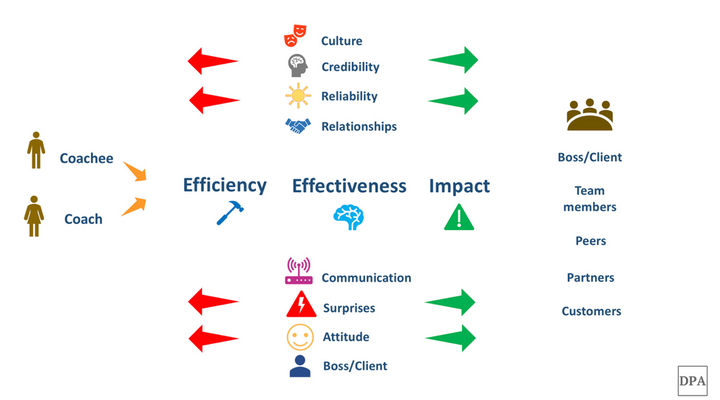An Exercise: Requirements vs. Preferences

Sometimes we get fed up with the things happening around us at work and want to run away.
We then go home, look at the family, think about eating and paying the mortgage, and get up and go back to work the next day. Often, we feel guilt or shame that we aren’t grateful for our job or circumstances. Many of us make up the 65% of US employees who don’t feel engaged at work according to Gallup. And many engaged employees in the remaining 35%, at times, feel the same way as our less engaged colleagues.
The truth is that these feelings are normal and experiencing them doesn’t make us unworthy of our jobs or roles as team members. Sometimes the day’s events get control of us. It’s entirely okay to acknowledge that things do, on occasion, fall short of our expectations.
Expectations drive our blueprint for how life and work should go. And our expectations are made up of requirements and preferences that we invent over time.
These expectations have a sense of comfort and permanence to them. In most cases, they are vestiges of unconscious choices we made along the way, rarely thinking about the unintended consequences of holding onto them as truths. We invented them along the way, and now it’s time to actively inventory, review, challenge, and reinvent them if they are no longer serving our best interests.
Any change starts with defining what things mean to us while not under the stress of the moment. It is a rare individual whose style under pressure is to think more clearly about the next step. Sometimes a personal reset is all that is needed to get back on track. Whether your stress is caused by a one-time event or has been around for some time, the following exercise will help you reframe and reinvent your expectations.
Requirements vs. Preferences Exercise
- Take a sheet of paper, draw a vertical line down the middle and label the left column “preferences” and the right column “requirements.”
- For your current job, list the things that are keeping you from your best work. Try to categorize them into preferences — the way you prefer things to be, and requirements — things defined by your values and standards that are non-negotiable. At this stage, don’t spend time worrying about which items are on the left and the right. Go with your gut and get your thoughts on the page.
- After you finish the list, put it down for at least a day. Let your subconscious mind work on it.
- When you return to the list, read through it once and add any new thoughts.
- Take the revised list and place as many items into the preferences column as you can.
The first pass of this exercise may result in a disproportionate number of items listed as requirements. By waiting one day to return to the list and posing the question: What matters to me? We can move more things to the preference column.
This exercise moves pet peeves from requirements to preferences. After all, if something is a preference, we can live with other answers and alternative ways of doing it. The primary condition is for us to let go of our need to control and be right. This simple, but not easy, exercise makes room to focus on the requirements that matter to you.
As a thought starter, here is an example:
Preferences
Everyone on time for meetings
All meetings have agendas and action items
Find ways to collaborate to get to the best answer
People who steal are fired
Leaders confront each other with issues
Promotions are only given based upon merit
Asking for help is heroic
Check titles at the door and be a team member first
Requirements
Proposals don’t have typos
Create a safe environment for candor
Do whatever you can to solve a customer problem on the first call
Zero tolerance for harassment
Don’t be cynical about your own projects
Decisions made by the team are supported outside the room
Bring issues to people that can help solve them early and often
The boss responds to my emails within two days
There is no attempt to suggest any of these examples belong in one column or the other. This exercise is personal. When thoughtfully done, it results in a significantly shorter list of requirements than most people expect.
Once the requirements are listed, the next step is to take each one and determine what to do about any perceived gaps you see between your ideal blueprint and what you see happening around you.
For example, if you believe people aren’t supporting team decisions outside of the room, what might you do? You may reiterate the importance of speaking up during the meetings to make sure you hear each point of view. You may need to confirm you are creating a safe environment for everyone to do so. You may set ground rules for the team that emphasize that command, consult, and consensus decisions are made during the meetings and have support outside of it.
In this example, there may be one or two people unable to follow that mandate, and they should be coached privately to determine what’s missing for them to heed the team requirements. In the worst-case scenario, remove team members if they cannot find a way to support the team standards. As the leader, you take the primary responsibility to make things the way you want them to be by helping everyone understand the requirements. If those efforts fall short, make other decisions. Everything starts with your efforts to gain linkage and alignment.
It’s helpful to distinguish between requirements for your behavior and other people’s behavior. We often set standards for others without them knowing it, and then are disappointed when they don’t behave consistently with our expectations. The saying goes that we measure ourselves by our intentions and others by their behaviors. By making others aware of your standards and helping them understand them, you are more likely (but not guaranteed) to achieve their acceptance. If you jump to rule-setting for them, resistance is the possible kneejerk reaction.
You may find it helpful to complete the exercises in my previous post, 2 Exercises to Increase Leadership Effectiveness, before this one. By first understanding your values and work style, you may more easily differentiate between preferences and requirements.
Most noteworthy is that we often create the conditions that cause us the most pain. Self-inflicted wounds may be the most uncomfortable. By letting expectations default to requirements, we set ourselves and others up for repeated failure.
Consequently, if our requirements list is long, we spend an inordinate amount of our day feeling stressed by the gap between expectations for ourselves and others and the behaviors that consistently show up. The simple mindset shift that helps us accept and embrace diverse work styles, personalities and approaches to getting work done gives us more freedom. It frees us to do more work that matters and less that doesn’t. And I promise that reaching the end of the week and noting how you and others fell short of your long default list of requirements is not the path to high performance or a healthy and prosperous lifestyle.
Takeaway: Continue to set high standards for yourself and acknowledge that others also have high standards, preferences, and requirements that will differ from yours. Within this profound understanding lies the richness of a diverse team and the key to your personal effectiveness and freedom.


